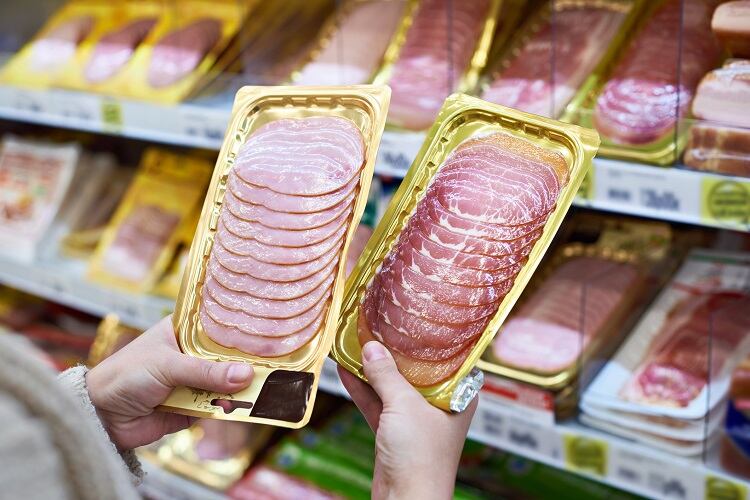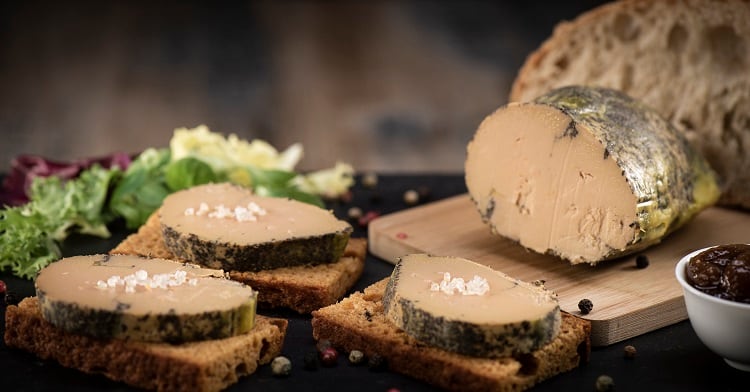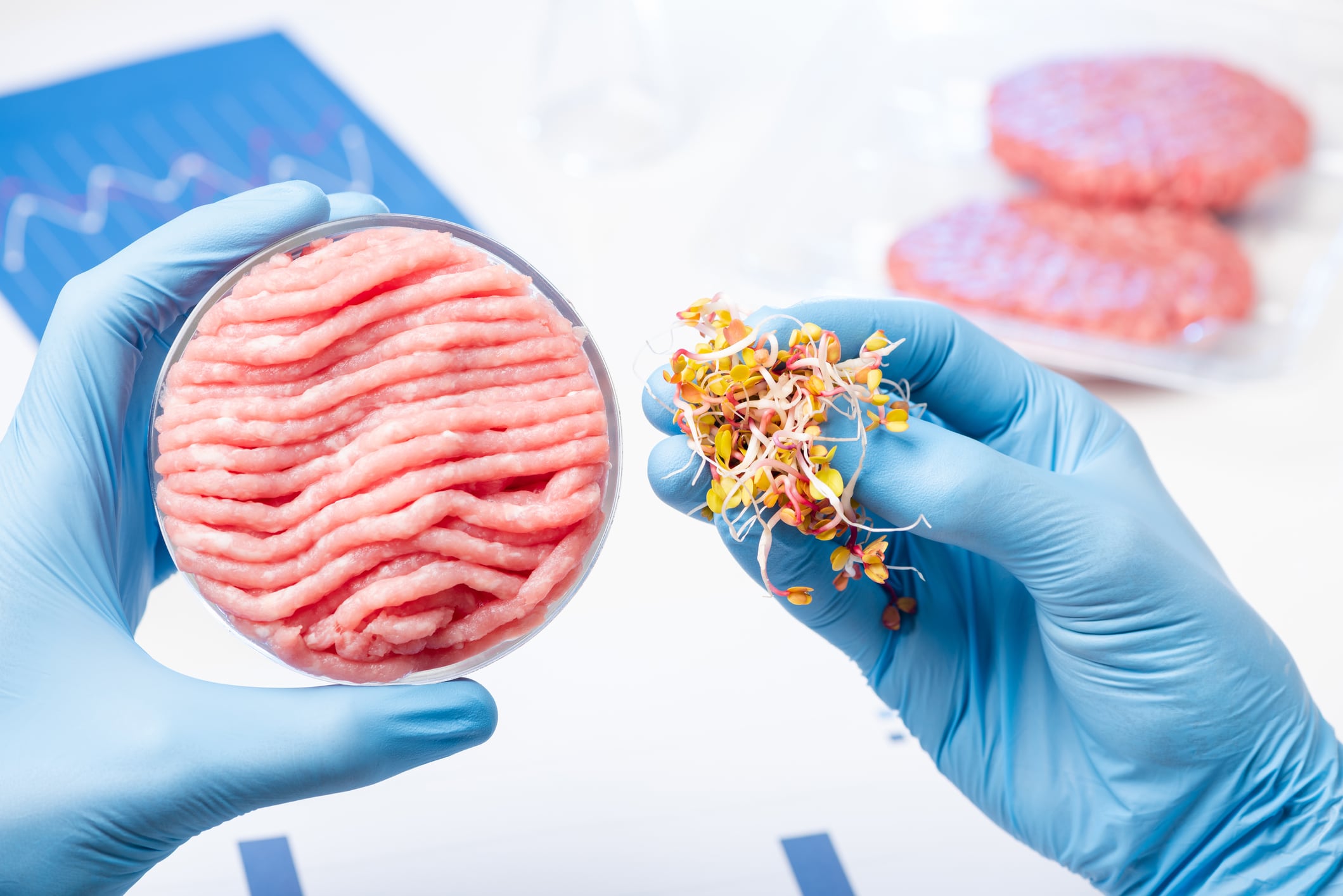In Italy, approximately 620 million animals are raised every year, 565 million of which are estimated to be raised in intensive farming systems. Therefore, it could be presumed that the majority of animal products on Italian plates have been bred according to intensive animal husbandry practices.
At the same time, concern is growing for farm animal welfare. In Europe, a majority of citizens say that animal welfare is important.
According to a survey conducted by the Welfare Quality Network, 69% of consumers in the Netherlands believe that animal welfare is important. This percentage goes up to 73% in the UK, 75% in France, and a whopping 87% in Italy.
Yet consumers struggle to interpret food labels indicating animal welfare standards, says Compassion in World Farming (CIWF) Italia. In the absence of an EU-wide label, current voluntary labels carrying animal welfare statements are ‘misleading’, according to the not-for-profit, because they do not report on the breeding method.
Rather, they carry claims such as ‘genuine’ or ‘100% natural’. “These labels can deceive consumers about animal living conditions. The claim ‘animal welfare’, in particular, does not give any information on the breeding method; knowing if an animal has been bred in a cage, indoors or outdoors, is fundamental to understand the real wellness potential in which an animal was bred,” notes CIWF Italia.
“In other words, the claim ‘animal welfare’ can also be applied to products from intensive farms, making them indistinguishable…from products from outdoor farms.”
A food label indicating animal breeding methods would help put consumers in touch with the top of the supply chain, argues the not-for-profit, who describes such a system as a potential ‘compass for consumers’, designed to help guide their purchases and facilitate ‘conscious choices’.
New animal welfare label to focus on breeding method
Therefore, on Monday (25 May), a new bill for a nationwide voluntary labelling system – based on breeding methods – was presented by CIWF Italia, Italian environmentalist association Legambiente, and environmentalist and politician Rossella Muroni, from Italy’s Free and Equal (Liberi e Uguali) party.
The bill was also backed by cured meat processor Fumagalli Industria Alimentari, which claims to adhere to animal well-being practices that exceed the legal requirements.
A voluntary national labelling system should be based on four basic principles: breeding method on the label, indication of the use – or not – of cages, at least three levels for each animal species, and a clear and understandable method of presentation.
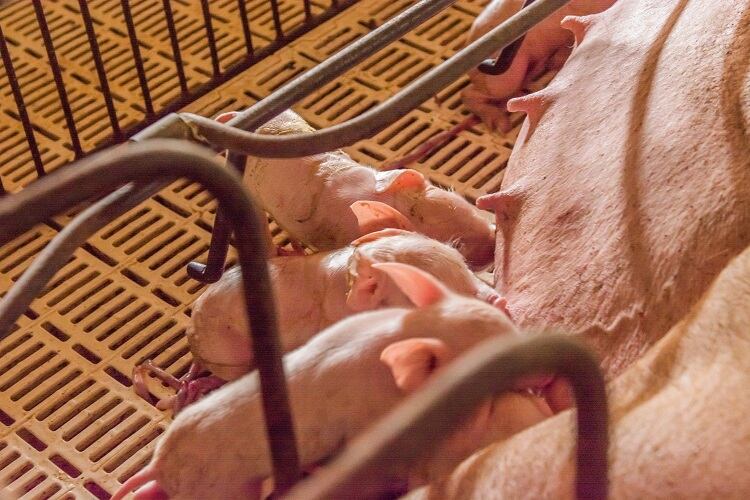
Pig breeding focus
CIWF and Legambiente have gone one step further to develop a series of criteria for the labelling of pig breeding methods. Each system, according to the associations, refers to different potential levels of well-being, depending on the extent to which the animals are able to express their natural behaviours.
The proposal distinguishes five levels of breeding methods, rated from 0 – 4.
Organic (0) refers to constant outdoor access; unconfined sows during gestation, giving birth, and breastfeeding; weaning over 40 days; compliance with the wellness requirements for organic certification.
Outdoor (1) refers to constant outdoor access; free sows during gestation, giving birth and breastfeeding; present of plant-based bedding; absence of surgical castration; weaning over 40 days; optional outdoor area.
Indoor (2) refers to 30% more space than the minimum legal requirements; free sows during gestation, giving birth and breastfeeding; presence of plant-based bedding; absence of surgical castration; optional outdoor area.
Indoor (3) but with more restrictions for animals refers to 30% more space than the minimum legal requirements; sows in cages for a maximum of six days; use of straw as bedding; surgical castration under anaesthesia; no outdoor access.
Intensive (4) refers to minimum space law requirements; sows in cages; no outdoor access.
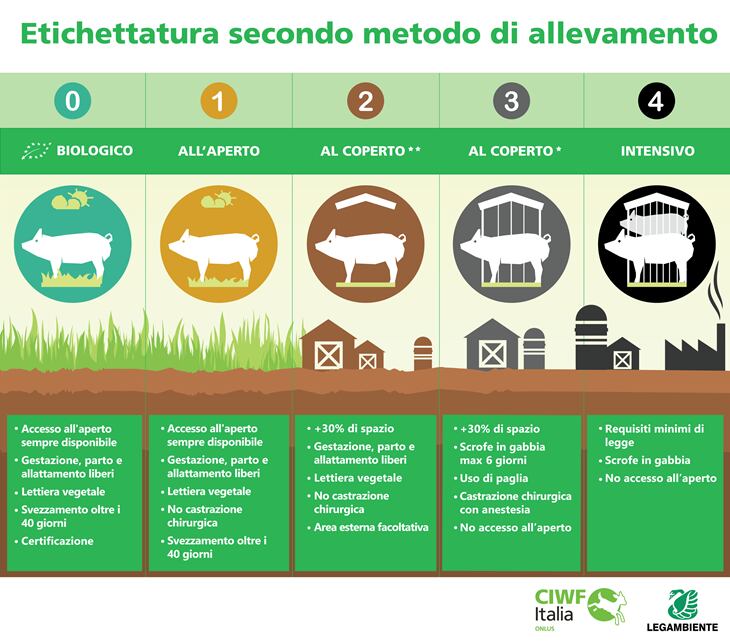
According to CIWF Italia, labelling is essential for citizens and the not-for-profit will work through these two tools to create the best opportunities for national and voluntary labelling, according to the breeding method, to become reality ‘as soon as possible’.
“In fact, we have already presented to the Ministry of Health and Agricultural Policies the specific labelling criteria that we would like to see adopted for pigs.”
What’s happening at EU level?
Despite not having yet implemented an EU-wide animal welfare label for food products, the Commission is aware that better animal welfare improves animal health and food quality, while reducing the need for medication. It can also help preserve biodiversity.
It is clear, also, that consumers are asking for this, acknowledged the Commission last week when announcing its new Farm to Fork and Biodiversity strategy.
As a result, the Commission has committed to revising its animal welfare legislation – including the slaughter of animals and animal transport – to ‘align it with the latest scientific evidence, broaden its scope, making it easier to enforce and ultimately ensure a higher level of animal welfare’.
“The Commission will also consider options for animal welfare labelling to better transmit value through the supply chain,” it noted.
Citizens, experts and stakeholders are invited to give their feedback on the Commission roadmap for the evaluation of the EU legislation on the welfare of farmed animals here, by 29 July 2020.


